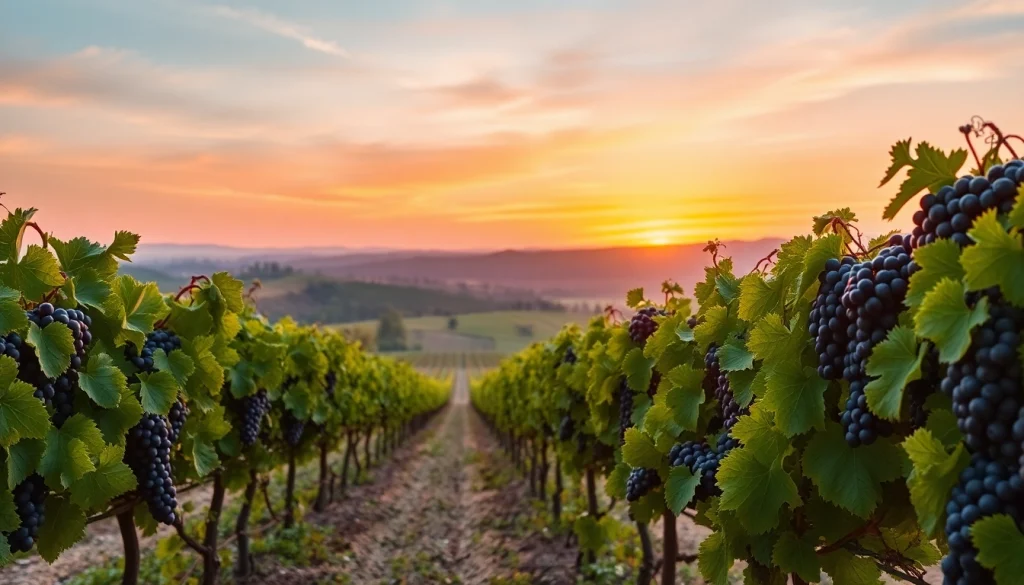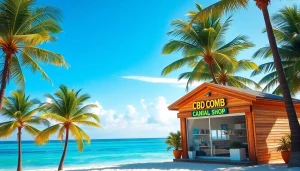Experience the Richness of Sacramento Wineries: A Guide to Local Vineyards

Introduction to Sacramento Wineries
The Sacramento region, comfortably nestled in California’s famous wine country, stands as a cornerstone of viticulture and culinary excellence. As an emerging destination for wine enthusiasts, it boasts a dynamic landscape of wineries, each with its own distinct character and flavorful offerings. Among the many treasures found in this area, the Sacramento Wineries are gaining recognition for their product quality and unique tasting experiences. This guide is designed to delve deeply into the nuances of Sacramento wineries, providing insight into their cultural significance, wine varietals, and much more.
Regional Overview
Located at the confluence of the Sacramento and American Rivers, the Sacramento Valley is not only a fertile agricultural region but also a critical player in California’s wine industry. The climate here is characterized by hot summers and cool evenings, which create favorable conditions for grape growing. Influenced by coastal breezes, the region produces wines that are expressive and refined, making Sacramento a must-visit for wine aficionados.
Cultural Significance
Wineries in Sacramento represent more than just profit; they embody a rich tapestry of culture, history, and community engagement. The Napa Valley may overshadow Sacramento in fame, but the region’s commitment to sustainable practices and family-run business models offers visitors an intimate glimpse into the lives of winemakers. Local wineries often host events that promote local art, music, and culinary talents, weaving the fabric of community into every sip of wine.
Wine Varietals of the Area
Here, the grape varietals are as diverse as the cultures that influence them. Cabernet Sauvignon, Merlot, and Zinfandel are popular, thriving in the region’s warm climate. However, the area also hosts lesser-known varietals such as Viognier and Malbec, which add uniqueness to local offerings. Winemakers experiment with blends, offering flight tastings that reveal the depth and character of each chosen grape. Visitors to Sacramento wineries can experience this diversity firsthand and discover wines that resonate with their taste preferences.
Top Sacramento Wineries to Visit
With over 200 wineries in the area, selecting the ones to visit can be overwhelming. Here are some standout choices that not only produce excellent wines but also offer unique experiences that enrich the visit.
Recommended Vineyards
Sacramento is home to various extraordinary vineyards that provide a mix of traditional tasting rooms and modern, innovative spaces.
- Light Post Winery: Known for its relaxed atmosphere, this winery emphasizes organic and sustainable farming practices. Guests can enjoy a range of award-winning wines paired with artisan cheese.
- Scribner Bend Vineyards: Nestled in the delta, this vineyard offers picturesque surroundings and a comprehensive wine tasting experience that emphasizes local grape varietals.
- Old Sugar Mill: A unique cluster of wineries situated in a historic sugar mill. This venue allows visitors to sample various wines from multiple producers all in one location.
- Gonzales Family Vineyard: This family-owned vineyard provides an authentic experience, showcasing small-batch wines that reflect the craftsmanship of its winemakers.
Unique Experiences Offered
A visit to a Sacramento winery is not just about wine tasting; it’s about immersing yourself in multifaceted experiences that can be cherished.
- Winery Tours: Many wineries offer guided tours that take visitors through vineyards and production facilities, providing insights into the winemaking process.
- Wine and Dine Pairings: Several vineyards partner with local chefs to offer exclusive dining events that pair dishes with specially selected wines.
- Art and Wine Events: Local galleries and wineries frequently host art shows, merging the visual arts with local wines, creating a cultural dialogue that celebrates creativity.
Events and Festivals
Throughout the year, the Sacramento region hosts a variety of events and festivals that celebrate its viticultural heritage.
- Sacramento Wine & Food Festival: This annual event showcases the pairing of great local wines with culinary delights from top regional chefs.
- Harvest Festivals: Celebrate the grape harvest with live music, grape stomping, and of course, tastings of the new vintages.
- Sip Sacramento: A weekend-long event where visitors can explore various wineries and enjoy tasting events throughout the region.
Wine Tasting Tips for Sacramento Wineries
Navigating wine tastings can initially seem daunting, but with a few helpful tips, visitors can enhance their experience and knowledge.
Choosing the Right Tasting Flights
When participating in a tasting, selecting the right flight is crucial. Most wineries offer multiple tasting options, allowing guests to sample a range of varietals or specific wine styles. It’s beneficial to consult with the staff about the recommended flights based on personal preferences—whether one enjoys bold reds or crisp whites. Flights often include a mix of the winery’s popular wines and limited releases, providing a comprehensive overview of what the estate offers.
Pairing Wines with Food
Understanding how to pair wines with foods can elevate the tasting experience. Light whites pair beautifully with seafood, while robust reds complement hearty meats. Many wineries facilitate food pairing sessions during tastings, allowing guests to explore delectable combinations. Always consult with the tasting room staff for ideal pairings—they can suggest local cheese or charcuterie options to enhance the tasting.
Understanding Wine Terminology
Familiarizing oneself with basic wine terminology can enhance conversations with winemakers and staff. Words like “tannin,” “acidity,” and “body” are commonly used descriptors. When tasting, it’s worthwhile to pick out these characteristics in each wine sampled. Doing so creates a more interactive and educational experience.
Planning Your Trip to Sacramento Wineries
Planning a trip entails logistics that can make the visit more enjoyable. Here are key considerations for those intending to explore the Sacramento wineries.
Best Times to Visit
The ideal time to explore Sacramento wineries hinges on personal preference and experiences sought. Generally, spring and fall are the most temperate months, making vineyard exploration more pleasant. Additionally, these seasons align with various grape harvest events and food festivals, providing cultural vibrancy to the experience. Winter tours also possess charm, as the landscape transforms and fewer crowds create a more intimate atmosphere.
Travel Tips and Transportation
For those coming from out of town, consider how to best navigate the region. Renting a vehicle offers flexibility, allowing visitors to tailor their winery visits. However, as tastings often include alcohol, employing a designated driver or local wine tour service is prudent for safety and enjoyment.
Accommodations Near Wineries
Various accommodations exist within proximity to Sacramento wineries. Options range from charming bed and breakfasts to modern hotels. Some wineries even provide lodging experiences that allow guests to wake up surrounded by beautiful vineyards. When booking, check for specialized wine and dine packages that offer curated experiences tailored for visitors.
The Future of Sacramento Wineries
As the wine landscape evolves, the Sacramento region is at the forefront of sustainability and innovation, paving the way for exciting possibilities in winemaking.
Sustainable Practices in Winemaking
The emphasis on sustainable practices has permeated the Sacramento wine industry, with many wineries adopting organic farming methods and exploring regenerative agriculture techniques. These initiatives not only preserve the local environment but also enhance the quality of grape production. By prioritizing sustainability, wineries ensure that they contribute positively to their communities and the ecosystem.
Emerging Trends in the Wine Industry
New trends such as natural wines and biodynamic practices are becoming increasingly popular among local winemakers. Consumers are gravitating towards wines that are produced with minimal intervention and reflect the terroir of the grape’s origins. Furthermore, technological advancements in fermentation and aging are allowing for unique innovation while ensuring top-quality product results.
Engaging with Local Winemakers
Building a personal connection with local winemakers enriches the winery experience. Many winemakers and vineyard owners are enthusiastic about sharing their stories, philosophies, and challenges with visitors, fostering a deeper understanding of the winemaking process. Participating in small-group experiences, workshops, or even vineyard walks allows for engagement that goes beyond mere tasting.




